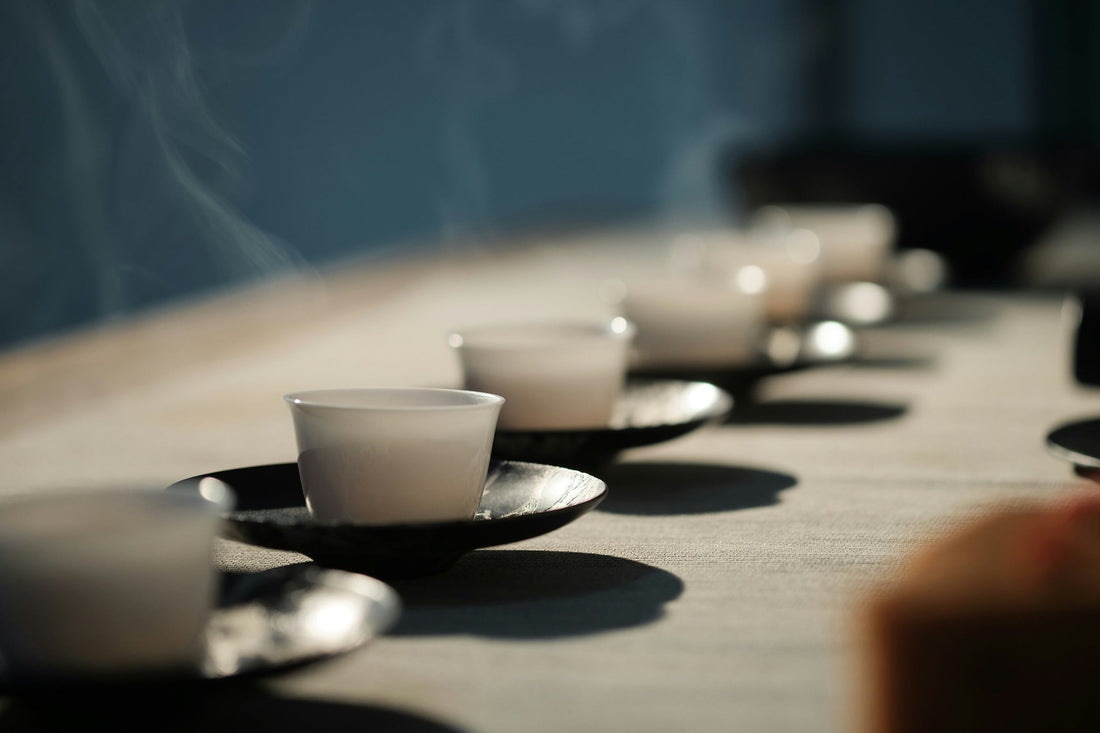
Why Decaf Coffee is the Perfect Afternoon Alternative to Tea
Share
Afternoons can be tricky for coffee lovers. You want that comforting ritual of a warm cup but without the buzz that keeps you awake at night. Many people turn to tea, but not everyone loves its taste or finds it satisfying. If that is you, decaf coffee is your perfect solution. Specialty decaf offers the same depth, body, and aroma you love in coffee while keeping caffeine low and sleep friendly.
At Frequent Coffee, we roast decaf with the same care as our full caf coffees. That means you can sip decaf in the afternoon and still enjoy the complexity and craft of specialty coffee. And if you want just a touch of caffeine — more than decaf but less than full strength — we will show you how to make your own custom blend using our Sidekick Decaf.
Tea versus decaf versus one third caf
Let’s compare what you get in your cup. Average caffeine levels look something like this:
- Black tea (8 oz): about 40–50 mg of caffeine
- Green tea (8 oz): about 25–35 mg
- Decaf coffee (8 oz): about 2–5 mg
- One third caf coffee (8 oz made by blending full caf with decaf): about 30–35 mg
These numbers show why decaf is a game changer. You get almost the same caffeine load as a cup of herbal tea — virtually none — while still enjoying a coffee experience. And if you want something between tea and full caf, a one third caf blend puts you right in the sweet spot, similar to green tea, but with the flavor of your favorite coffee beans.
Why decaf works better than tea for many coffee lovers
Tea is a wonderful beverage for those who enjoy it, but not everyone is drawn to its flavor. Coffee drinkers often crave richness, roast depth, and the unique aroma of brewed coffee. Decaf gives you that same sensory satisfaction without the stimulant load. Instead of making a compromise, you get the full coffee experience on your terms. Plus, decaf is versatile. Pour over, French press, espresso — every brew method works with decaf beans.
How to build your own caffeine plan
One of the best parts of working with decaf is how it lets you customize. By mixing decaf with your favorite full caf coffee, you can dial in exactly how much caffeine you want. For example:
- Two thirds decaf and one third caf: Similar caffeine to green tea (around 30 mg per cup)
- Half decaf and half caf: About 50–60 mg per cup, like a strong black tea
- Mostly decaf with just a scoop of caf: Enough to take the edge off while staying gentle on sleep
We recommend starting with our Sidekick Decaf as your base. It is roasted to shine on its own but also blends seamlessly with our full caf offerings. By using Sidekick, you can create a personal coffee plan that matches your afternoons, evenings, and even late night cups without worry.
Practical tips for switching to afternoon decaf
- Start early: Try making the switch to decaf after lunch. That way, caffeine is not sneaking into your system close to bedtime.
- Experiment with ratios: A one third caf blend can give you just enough kick without overdoing it.
- Keep flavor first: Use high quality specialty decaf like Sidekick. The better the beans, the less you will notice any difference in body or aroma compared to full caf.
Conclusion
You do not have to settle for tea if you do not enjoy it. Decaf coffee provides the comfort and flavor of coffee with almost none of the caffeine. And if you want to land somewhere in between, mixing with our Sidekick Decaf lets you design your own caffeine level. That way, you can sip more, jitter less, and still get a satisfying cup every afternoon.
References
- FDA. Spilling the beans: How much caffeine is too much?
- Harvard School of Public Health. The Nutrition Source: Caffeine and health.
Instagram Link: Follow us on Instagram
Brand Disclaimer: Science and coffee are ever evolving — we share the best knowledge available today, but it is always okay to experiment and learn what works best for you.
Medical Disclaimer: Information in this blog is for educational purposes only and is not intended as medical advice. Always consult with a qualified health care professional before making changes to your diet, caffeine intake, or health practices.
